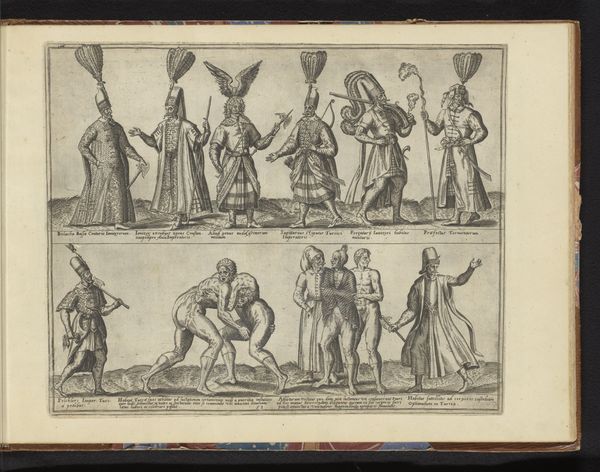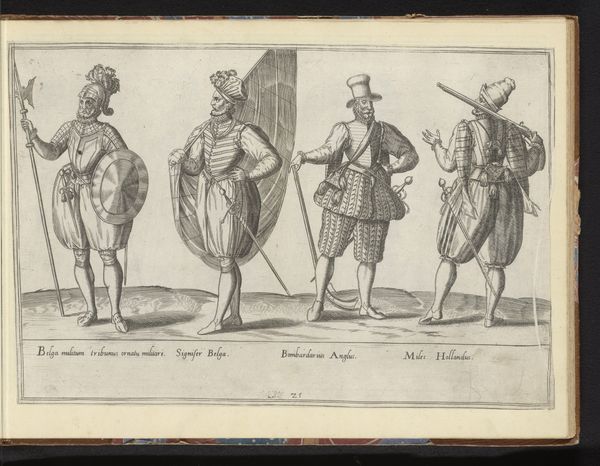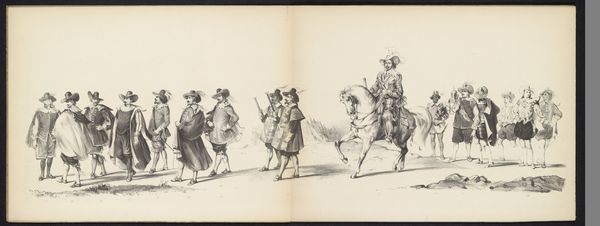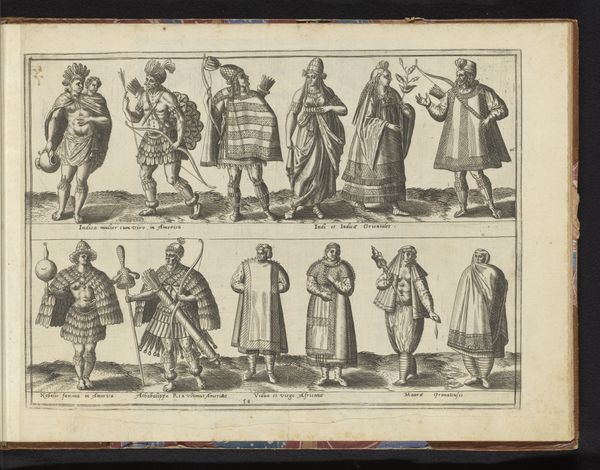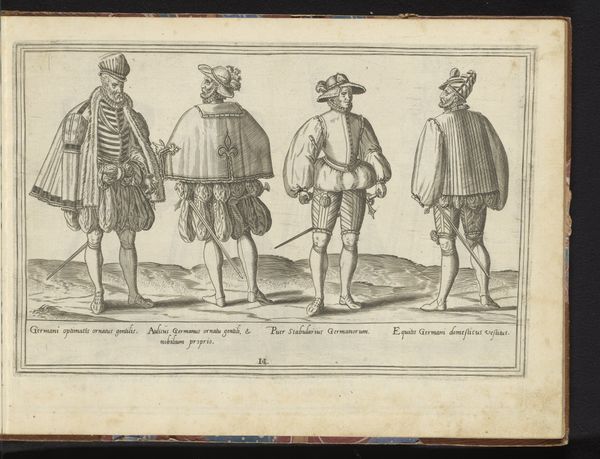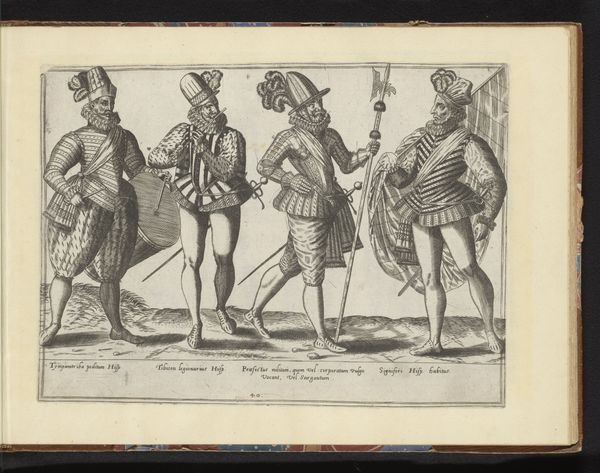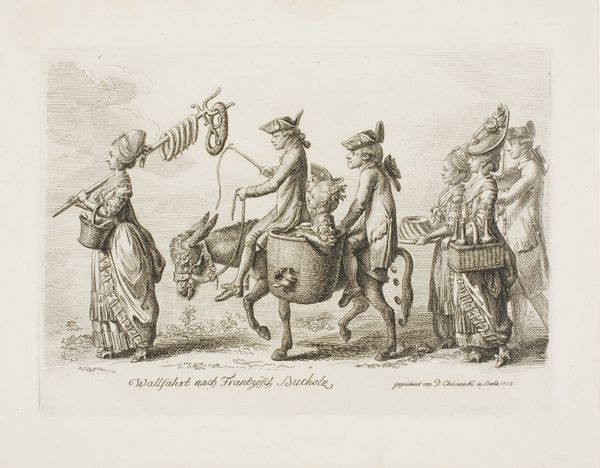
drawing, print, paper, ink, engraving
#
portrait
#
drawing
# print
#
pen sketch
#
mannerism
#
figuration
#
paper
#
ink
#
genre-painting
#
history-painting
#
engraving
Dimensions: height 265 mm, width 360 mm
Copyright: Rijks Museum: Open Domain
Curator: This print, titled "Soldaten, gekleed volgens de mode van ca. 1580", or "Soldiers dressed according to the fashion of around 1580," was created by Abraham de Bruyn in 1581. It’s currently held at the Rijksmuseum. What's your initial impression? Editor: Well, the first thing that strikes me is the… almost comical air these soldiers possess. There’s such a strong emphasis on their attire, these incredibly elaborate and puffy sleeves and hats, which undermines any sense of military threat, don't you think? It's almost satirical. Curator: I think it’s essential to contextualize this within the Mannerist aesthetic. The exaggerated forms, the focus on artifice, that's the point. Bruyn is playing with the very notion of the ideal soldier. Editor: So, rather than seeing these as straightforward depictions, we should interpret them as a comment on the militarization of society at the time? The emphasis on outward appearance over actual combat readiness could certainly be seen as a critique. I imagine the performance of masculinity plays a role here, right? Curator: Precisely. Think about the role of clothing in solidifying class and military hierarchies. De Bruyn lays bare how these constructions rely upon exaggerated costuming and carefully coded signifiers of status and power. There's also something to be said here about anxieties related to military prowess and how this is linked to their cultural and economic status. Editor: I can certainly get behind this line of thought. The stiff poses, the precise detailing of the fabrics, all feel designed to be visually arresting. These men are peacocks! And the print medium itself allows for the wide distribution of this "ideal" of soldierly fashion, almost like a prototype or manual. Curator: Absolutely. The print as a means of disseminating ideology cannot be understated. It’s also interesting to see how this particular image contributes to the construction of masculinity in the late 16th century. There’s the emphasis on ornamentation that simultaneously glorifies but maybe also trivializes military power. Editor: Right. What an engaging exploration into fashion, power, and print! I never expected such subtle cultural analysis lurking beneath those puffy sleeves. Curator: It goes to show how the most seemingly straightforward historical depictions can actually offer incisive insights into complex social and cultural issues. A picture, in this case a print, really can tell a thousand stories.
Comments
No comments
Be the first to comment and join the conversation on the ultimate creative platform.


